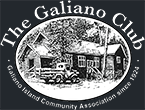The funky offspring of the Galiano Club, the Food Program began in 2008.
The Galiano Community Food Program strives to ensure that Galiano Island is a thriving, livable, food-secure community, where every resident feels included, welcome and empowered to build a deeper connection with their food system. In so doing, the Program improves Galiano’s ecological sustainability and community resilience in the face of climate change and uncertainty. The program seeks to set an example that reaches beyond our local community and spreads across the country.
Food Program Blog
Community Games Night by Alison Colwell
 Community Games Night turns the South Hall into a giant family living room. Tables are set up with Scrabble and Battleship, Risk and Connect 4. There are decks of cards, and a Twister mat on the floor for the younger kids. It began as a way for the Food Program to hold an evening kitchen to stock the freezer with meals for seniors, but has since grown (as do so many of our food program ideas) into a much-loved monthly event.
Community Games Night turns the South Hall into a giant family living room. Tables are set up with Scrabble and Battleship, Risk and Connect 4. There are decks of cards, and a Twister mat on the floor for the younger kids. It began as a way for the Food Program to hold an evening kitchen to stock the freezer with meals for seniors, but has since grown (as do so many of our food program ideas) into a much-loved monthly event.
Games Nights happen once a month, on a Thursday, between 6 and 8pm. The cost is sliding scale: $5-$10 per person. Sometimes people bring their families with them for a chance to connect over a board game, others just meet up with friends (or make friends) when they get there. Someone is always looking for a partner to play a new game with. Everyone is welcome, and we have dozens of games to choose from.
Usually we have a feature game. Someone offers to teach a game to anyone who wants to learn. We’ve featured Chess, Mancala, Mexican Domino Train…we’re always interested in getting suggestions of games you’d like us to feature.
And did I mention there’s supper? Nothing fancy. I always make lots of pizzas, a big green salad, and a couple of main dishes. Sometimes it’s Black Bean Chili, or Lasagna, or Indian Butter chicken. (And […]
Beekeepers Course – Sunday, August 7th
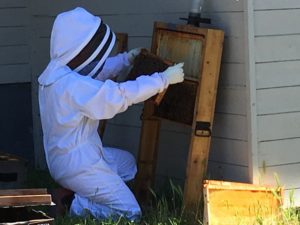 Apiary Inspector David MacDonald will be coming to Galiano to share his knowledge on beekeeping, with specific focus on the varroa mite and its impact on honeybee populations. This course is for all levels of beekeepers, from novice to experienced, and will combine a morning tutorial with a field inspection at a local apiary. If you are interested, please RSVP to Colleen at galianofoodprograms@gmail.com. Details have not been confirmed but the course will likely run from 9am until 2pm. Entrance fee is by donation, a sliding scale of $10-15, with proceeds going to the Food Program.
Apiary Inspector David MacDonald will be coming to Galiano to share his knowledge on beekeeping, with specific focus on the varroa mite and its impact on honeybee populations. This course is for all levels of beekeepers, from novice to experienced, and will combine a morning tutorial with a field inspection at a local apiary. If you are interested, please RSVP to Colleen at galianofoodprograms@gmail.com. Details have not been confirmed but the course will likely run from 9am until 2pm. Entrance fee is by donation, a sliding scale of $10-15, with proceeds going to the Food Program.
Gleaning Project and Berry Co-op
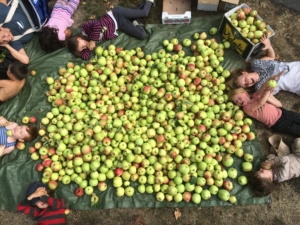 Are you a landowner with trees that are dripping with fruit, but you don’t have time to pick them? Is climbing a ladder getting to be too much? Did that one tree have a bumper crop this year? Do you have more than your family can use? Is your garden overflowing? Would you like to share the bounty with other members of the community? Would you benefit from access to healthy produce, but have no trees or garden of your own? Do you enjoy the simple pleasure of harvesting in a group?
Are you a landowner with trees that are dripping with fruit, but you don’t have time to pick them? Is climbing a ladder getting to be too much? Did that one tree have a bumper crop this year? Do you have more than your family can use? Is your garden overflowing? Would you like to share the bounty with other members of the community? Would you benefit from access to healthy produce, but have no trees or garden of your own? Do you enjoy the simple pleasure of harvesting in a group?
If you answered yes, then Gleaning Project may be for you. The Food Program organizes volunteers to gather to pick surplus crops that are shared between the pickers, the landowners, families in need and the Food Program’s kitchen events. We bring orchard ladders and picking bags and try to gather as much as possible so there’s no waste. A staff member from the Food Program is always present to supervise the pickers and liaise with the landowners, and the Food Program carries insurance that covers our activities on your land.
If you’re interested in harvesting or having us come pick, contact us for more information. Any produce or fruit is appropriate–we love unusual offers!
Similar to gleaning, but with a twist, is the Berry Co-op, which is returning this year at the same south-end site. Thanks to […]
Our BeeCause Bees, by Colleen Doty
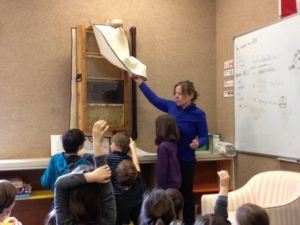 That March morning the school library was warm and smelled of cedar, beeswax. Weeks of anticipation–“When will they arrive?”–culminated. As two students and I approach the covered case, one student hyperventilates. “It’s ok,” I say. “The bees are behind glass.” We speak in hushed tones, overcome by rhythmic buzzing. I lift the cloth cover and we three exhale: ten-thousand pairs of wings shimmer on striped bodies.
That March morning the school library was warm and smelled of cedar, beeswax. Weeks of anticipation–“When will they arrive?”–culminated. As two students and I approach the covered case, one student hyperventilates. “It’s ok,” I say. “The bees are behind glass.” We speak in hushed tones, overcome by rhythmic buzzing. I lift the cloth cover and we three exhale: ten-thousand pairs of wings shimmer on striped bodies.
In collaboration with Galiano Community School Principal Shannon Johnston, staff, teachers, and local beekeeper Brad Lockett, the Food Program received a grant from BeeCause.org and Whole Kids Foundation for an observation honeybee hive. The goal of BeeCause.org is to raise a generation of kids who love bees and respect the role they play in our ecosystem and food chain. BeeCause hopes to install 1000 hives in schools. Our school was the first and only, so far, in Canada to receive such an observation hive. To date, 174 other schools in the US, Haiti and the Bahamas have received hives.
Our school has embraced the bees. Now that the kids have experienced how gentle the bees are the initial fear has evaporated. Together, everyone’s been learning. “A bee only makes 1/12 of a teaspoon of honey in its entire life,” states Sophia. Dylan notes: “To make honey, bees regurgitate nectar from one of their stomachs…” The bees pass nectar from bee to bee […]
Galiano’s Next Top Nettle – 2016 Winning Dishes
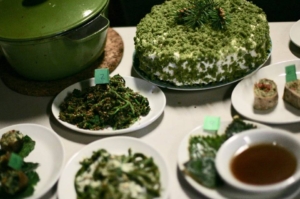 Nettle paneer with peas, from Cate Sandilands
Nettle paneer with peas, from Cate Sandilands
This recipe is adapted from Madhur Jaffrey’s classic saag paneer recipe in World Vegetarian (2002). I added the non-traditional peas for colour and texture; I also adjusted the spices to suit nettles.
Ingredients:
For the paneer
2 litres whole milk
3-5 tbsp white vinegar
1 tsp toasted cumin, ground
For the nettle paneer
2 lbs nettle tops, soaked in cold water and drained
1 fresh green Indian or Thai chile, chopped (leave seeds in)
2 tsp fine cornmeal
3 tbsp canola or grapeseed oil
½ c finely chopped onion
2 inch x 1 inch piece fresh ginger, peeled and finely grated
1 ½ c finely chopped ripe tomatoes
1 ½ to 2 tsp salt
2 to 3 tsp ground, toasted cumin
¼ tsp cayenne
½ tsp cinnamon
2 c sweet peas, fresh or defrosted
1 small patty paneer, as above, cut into small cubes or coarsely crumbled
Directions:
For the paneer
Put the milk in a large, heavy saucepan and set over medium-high heat. Meanwhile, place a colander in the sink and line it with a clean dishtowel or three to four layers of cheesecloth.
When the milk begins to boil, turn the heat down to low. Quickly add 3 tbsp of the vinegar and stir. The mixture should curdle at this point, the whey completely separating from the curds. If this does not happen, add 1 remaining tbsp of vinegar and repeat the process (and once more again, if needed: make sure […]
Friday Food Film Festival – May 6th – Doors at 6pm
 We’ll be playing two food documentaries with a intermission for snacks (or supper) in between. Come watch some enlightening films about food and join in the conversation.
We’ll be playing two food documentaries with a intermission for snacks (or supper) in between. Come watch some enlightening films about food and join in the conversation.
